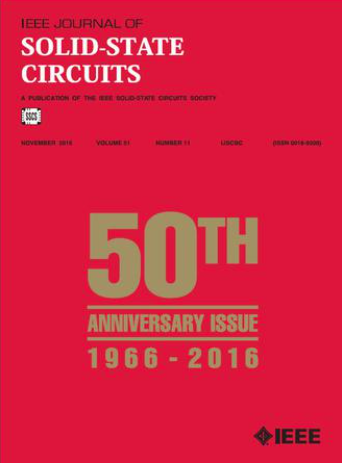High-Sensitivity, Low-Power IR-UWB Radar Transceiver With Self-Interference Resistance for Child Presence Detection and Precision Positioning
IF 4.6
1区 工程技术
Q1 ENGINEERING, ELECTRICAL & ELECTRONIC
引用次数: 0
Abstract
This article presents a radar-enabled impulse radio ultrawideband (IR-UWB) system by adopting a self-interference-resistant RF transceiver. It demonstrates that child presence detection (CPD) using IR-UWB radar is feasible through the implementation of a radar system that includes physical (PHY), media access control (MAC), and application (APP) processors. The RF transceiver shows high receiver (RX) sensitivity and high transmitter (TX) peak power with low power. In addition, a radar-dedicated TX is used to improve the TX signal isolation to the RX. To achieve the high RX chain gain and low noise figure (NF) of RX, an RX front end (RX-FE) [low-noise amplifier (LNA) and voltage-to-current (V2I)] with a 50% duty cycle local oscillator (LO) is implemented. Furthermore, a notch pulse shaping filter (PSF) technique is proposed to meet spectrum emission mask (SEM) specifications with low power consumption. An LNA with wide gain ranges is also proposed to improve the sensitivity and support various applications related to radar and positioning applications. The UWB transceiver achieves −96.5-dBm sensitivity at BPRF 6.81 Mb/s and 14-dBm TX peak power and supports radar operation with UWB channels 5 and 9.求助全文
约1分钟内获得全文
求助全文
来源期刊

IEEE Journal of Solid-state Circuits
工程技术-工程:电子与电气
CiteScore
11.00
自引率
20.40%
发文量
351
审稿时长
3-6 weeks
期刊介绍:
The IEEE Journal of Solid-State Circuits publishes papers each month in the broad area of solid-state circuits with particular emphasis on transistor-level design of integrated circuits. It also provides coverage of topics such as circuits modeling, technology, systems design, layout, and testing that relate directly to IC design. Integrated circuits and VLSI are of principal interest; material related to discrete circuit design is seldom published. Experimental verification is strongly encouraged.
 求助内容:
求助内容: 应助结果提醒方式:
应助结果提醒方式:


